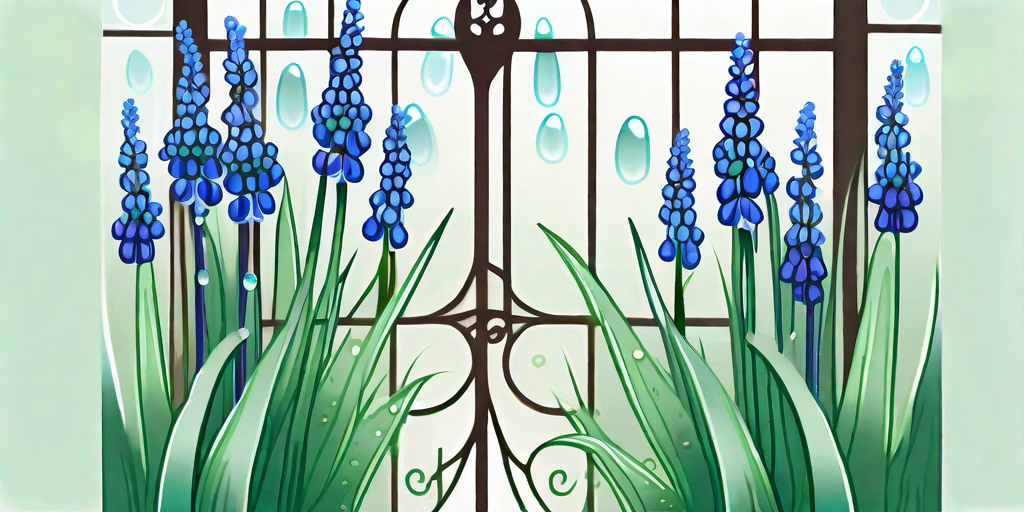
Spring has a way of painting the world in vibrant colors, and one of the most enchanting hues is the deep, royal blue of grape hyacinths. These petite perennials are not only a feast for the eyes, but they also carry a sweet secret that makes them a must-have for any garden.
The Grape Hyacinth: A Primer
Before we delve into the sweet secret of the grape hyacinth, let's take a moment to appreciate its charm. Known scientifically as Muscari, the grape hyacinth is a genus of perennial bulbous plants native to Eurasia. They are named for their tight clusters of bell-shaped flowers that resemble bunches of grapes.
These hardy little plants are a favorite among gardeners for their easy care and vibrant color. They bloom in early spring, providing a much-needed splash of color after the long winter months. But their appeal extends beyond their visual charm. The grape hyacinth has a sweet secret that sets it apart from other spring bloomers.
The Sweet Secret of Grape Hyacinths
What makes the grape hyacinth truly special is its delightful fragrance. These tiny flowers pack a powerful punch when it comes to scent. Their aroma is sweet and heady, often compared to the scent of grapes or wine. This intoxicating fragrance is the grape hyacinth's sweet secret, and it's one that can transform your garden into a sensory delight.
Imagine stepping outside on a crisp spring morning, the air filled with the sweet scent of grape hyacinths. It's an experience that can lift your spirits and set a positive tone for the day. But the benefits of this fragrant flower don't stop at the garden gate. They can also be brought indoors to brighten up your home and fill it with their sweet scent.
How to Grow Grape Hyacinths
Now that you're intrigued by the grape hyacinth's sweet secret, you're probably wondering how to grow these fragrant flowers in your own garden. The good news is that grape hyacinths are relatively easy to grow, even for novice gardeners. Here's a step-by-step guide:
Step 1: Choose the Right Location
Grape hyacinths prefer full sun to partial shade. They can tolerate a variety of soil types, but they do best in well-drained soil. Choose a location that gets at least six hours of sunlight a day.
Step 2: Plant the Bulbs
Plant the bulbs in the fall, about 2-3 inches deep and 3-4 inches apart. The pointed end of the bulb should be facing up. After planting, water thoroughly.
Step 3: Care for Your Plants
Water regularly, especially during dry periods. In the spring, apply a balanced fertilizer to promote blooming. After the flowers have faded, allow the leaves to die back naturally. This allows the plant to store energy for the next year's bloom.
FAQs About Grape Hyacinths
As with any plant, there are common questions that arise when it comes to growing and caring for grape hyacinths. Here are a few frequently asked questions:
Are grape hyacinths invasive?
While grape hyacinths can spread and naturalize over time, they are not typically considered invasive. However, if you prefer a more controlled look, you can easily manage their spread by digging up and dividing the bulbs every few years.
Are grape hyacinths deer resistant?
Yes, grape hyacinths are generally deer resistant. Their strong scent tends to deter deer, making them a great choice for gardens in areas with high deer populations.
Can grape hyacinths be grown in pots?
Absolutely! Grape hyacinths are excellent for container gardening. Just make sure the pot has good drainage and the bulbs are not overcrowded.
Fun Facts About Grape Hyacinths
Just when you thought you knew everything about grape hyacinths, here are a few fun facts to add to your knowledge:
- The name Muscari comes from the Greek word for musk, referring to the flower's sweet scent.
- Grape hyacinths can attract bees and butterflies, adding to the biodiversity of your garden.
- Despite their name, grape hyacinths are not related to true hyacinths.
So there you have it, the sweet secret of grape hyacinths revealed. These fragrant flowers are a delightful addition to any garden, bringing color, fragrance, and a touch of whimsy. So why not give them a try? Your nose will thank you!















